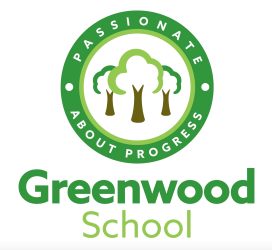Context for joining Behaviour Hubs
Greenwood School is the secondary Pupil Referral Unit for the nine New Forest secondary schools. We have up to 70 places on site for students but support up to a further 70 through various interventions and educational packages. Greenwood caters for students with social, emotional and mental health difficulties and or medical needs from the New Forest secondaries. The headteacher was appointed in 2018 and our last Ofsted inspection was in December 2022 where we were judged as continuing to be a ‘Good’ school. The school is not expected to support students with EHC plans long-term but currently a third of the on-site students have an EHC.
Behaviour challenges and goals
A significant challenge was the perception from certain areas of staff that suspension is the only way to deal with some behaviours from students. Too often they wanted the student removed as opposed to trying to find out the reasons for what happened and how to stop it from repeating. We needed to increase the accountability within the staff body for building, maintaining and restoring educational relationships with students. Only then could we structure the programme of interventions.
Our cohort are very transient in nature, as we have students who may only stay at Greenwood for six weeks. This is alongside those students who are PEX and will be staying with us for a longer period of time. This means we have to build relationships and set expectations quickly, thus producing a consistent message to the students. Finally, we reminded staff that challenging behaviour is the result of an unfulfilled need which we need to support before learning can start.
Our main goals were:
- Reduce the number of suspensions and zero points (non-engagement/disrespectful behaviour).
- Increase the sense of belonging from the students towards Greenwood School
“Challenging behaviour is the result of an unfulfilled need which we need to support before learning can start.”
Solutions to behaviour challenges
We appointed a Restorative Lead teacher who was then given a working party of staff to research, develop and implement what restorative practice at Greenwood could be. This group has met once per half term through the year and delivered training to all staff so that the Restore process has become embedded within the school.
Through the Behaviour Hubs programme we have been able to send numerous staff to our Lead School but also to Open Days at other similar provisions to ours. These Networking Events and Open Days have been key in validating the work we are already doing but also enhancing our knowledge. Senior and middle leaders have taken part in the visits with a variety of staff taking something from the days and then incorporating it into our Greenwood ethos.
We have also provided the following training for all staff at Greenwood:
- Scripted language – Thank you NOT please, You need…, What? NOT why? – provides a consistent approach.
- Use of Non-Violent Communication – removing ‘blame and shame’.
- Expectation of ‘repair’ – students are becoming more aware they need to repair relationships and take responsibility for their actions
- Direct communication with on-call via email – removes frustration from staff so they are able to get support in time when needed.
- Use of restorative language, scripts and restorative practices during on-call – the approach is consistent and supportive of staff and students.
- Direct access to Cpoms – ensures clear and timely communication.
- Results matrix – used in debrief by all staff to give transparency and consistency regarding sanctions and suspensions.
- Social discipline window awareness – how we can use it to ensure that we, as staff, are in the right ‘zone’ to be able to support our students.
Impact on behaviour
The following positive changes have already been observed following the implementation of our action plan:
- Ofsted report from December 2022 has the opening line ‘Students thrive at Greenwood’ and stated that the school remains a ‘Good’ school.
- Suspensions are now lower than at the same time last year due to the debrief restorative process and staff looking for alternatives and using the mitigating factors for students’ behaviours.
- Zero points have seen a reduction termly through the year and are lower than last year in the same timeframe.
- Greenwood’s Restorative practice has been presented to all the New Forest Secondary Schools with resources being shared.
- Schools from the New Forest area and within Hampshire have requested further support with their Restorative work. This has included their staff coming to Greenwood to see Restorative practice in action and will lead to Greenwood school visiting schools next year.
Next steps on your behaviour journey
- Implement as standard practice, the use of the reflect document after any incident where staff may benefit from a reflection tool.
- Introduce the document to students as part of a restorative intervention.
- Create a restorative check in/ check out template to be used in Keyworker times as a reflection tool for students.
- Train a team to implement restorative interventions, resulting in AQA awards.
- Compile a list of actions to ‘repair’ physical harm done to the building or belongings of Greenwood, through the improving of the Greenwood environment.
- Expand the use of restorative for any issues between staff.
- Create an introduction to Greenwood Restore, to be used as part of the induction for all new staff and share with parents.
- Formally link the Window of Tolerance strategy to Restorative Practice
- Recognition of Restorative Practice in student’s attainment records for when they return to their home-schools.

